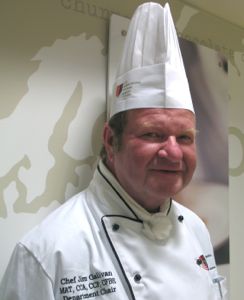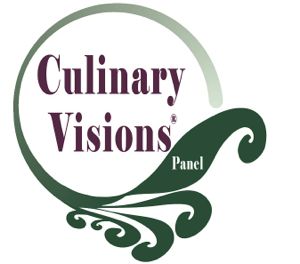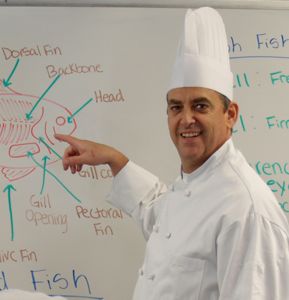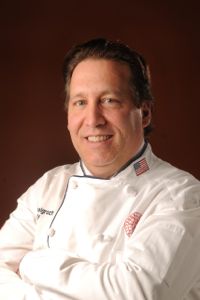 Imagine working side by side with a top caterer in Seattle, helping with the grape harvest for the oldest continuously operating, family-owned winery in California, or experiencing farm-to-table initiatives on a farm in Hawaii. These opportunities and others are available to women working in the food, beverage and hospitality industries through the 2014 Les Dames d’Escoffier International (LDEI) Legacy Awards.
Imagine working side by side with a top caterer in Seattle, helping with the grape harvest for the oldest continuously operating, family-owned winery in California, or experiencing farm-to-table initiatives on a farm in Hawaii. These opportunities and others are available to women working in the food, beverage and hospitality industries through the 2014 Les Dames d’Escoffier International (LDEI) Legacy Awards.
Established in 2009, each LDEI Legacy Award offers a one-week workplace experience to non-Dame women in the United States, U.K. and Canada. Award recipients will work alongside some of the culinary and hospitality industry’s top women professionals, all members of LDEI, an international organization of women leaders in food, beverage and hospitality whose mission is education and philanthropy.
For an application, log on to www.LDEI.org and click on 2014 Legacy Awards. Deadline to apply is April 21, 2014.
Six awards will be offered in five categories: one each in Culinary, Pastry, Wine, Food/Wine Journalism and two experiences in Farm-to-Table. The professional experience programs include:
· Culinary-Catering with Lisa Dupar, Lisa Dupar Catering in Seattle.
· Entrepreneurship-Pastry for Production with Shari Carlson of Dessert Dreams, Dallas
· Wine with Carolyn Wente, Wente Family Estates in Livermore, Calif.
· Food/Wine Journalism at Good Housekeeping magazine with Susan Westmoreland and Sharon Franke, New York City
· Two Farm-to-Table with Judith Winfrey, Love is Love Farm, and Charlotte Swancy, Riverview Farms, in Atlanta. And one on the Big Island of Hawaii with Lesley Hill and Wailea Agricultural Group
Award winners will be reimbursed for airfare and hotel accommodations for six nights for up to US$2,000. Winners will be announced in early June and
 Courtesy of Mercer Cutlery
Courtesy of Mercer Cutlery
 Imagine working side by side with a top caterer in Seattle, helping with the grape harvest for the oldest continuously operating, family-owned winery in California, or experiencing farm-to-table initiatives on a farm in Hawaii. These opportunities and others are available to women working in the food, beverage and hospitality industries through the 2014 Les Dames d’Escoffier International (LDEI) Legacy Awards.
Imagine working side by side with a top caterer in Seattle, helping with the grape harvest for the oldest continuously operating, family-owned winery in California, or experiencing farm-to-table initiatives on a farm in Hawaii. These opportunities and others are available to women working in the food, beverage and hospitality industries through the 2014 Les Dames d’Escoffier International (LDEI) Legacy Awards.  Emmi Roth USA, an award-winning producer of specialty cheeses, has announced the winner of its Grand Cru® Recipe Contest for Postsecondary Culinary Students. Caroline Ausman of Burlington, Wis., took top honors with her recipe for Manicotti en Croûte with Brandied Fig Sauce.
Emmi Roth USA, an award-winning producer of specialty cheeses, has announced the winner of its Grand Cru® Recipe Contest for Postsecondary Culinary Students. Caroline Ausman of Burlington, Wis., took top honors with her recipe for Manicotti en Croûte with Brandied Fig Sauce. Cal Poly Pomona Hospitality Management professor Dr. John Self has been selected to be a Fulbright Scholar at Haaga-Helia University of Applied Sciences in Helsinki, Finland. He will teach abroad from August through November.
Cal Poly Pomona Hospitality Management professor Dr. John Self has been selected to be a Fulbright Scholar at Haaga-Helia University of Applied Sciences in Helsinki, Finland. He will teach abroad from August through November. A veteran culinary educator recalls mingling among “the beautiful people” at the last annual TomatoFest.
A veteran culinary educator recalls mingling among “the beautiful people” at the last annual TomatoFest. New survey reveals the focus of today’s culinary education
New survey reveals the focus of today’s culinary education Due to release June 1, Culinary Educators’ Teaching Tools & Tips written by Colin P. Roche, Bradley J. Ware and Claudette Lévesque Ware is the first text of its kind.
Due to release June 1, Culinary Educators’ Teaching Tools & Tips written by Colin P. Roche, Bradley J. Ware and Claudette Lévesque Ware is the first text of its kind. To baking-and-pastry students with dreams of owning and operating their own bakeshops, whether to create from scratch or utilize a convenience-added product has everything to do with quality and consistency.
To baking-and-pastry students with dreams of owning and operating their own bakeshops, whether to create from scratch or utilize a convenience-added product has everything to do with quality and consistency. If you’re 45 or older, you probably prefer a baked potato over french fries, according to results of a recent study. However you like your potato, it’s the vegetable of choice for nearly one-quarter of Americans, and virtually everyone in this country eats them.
If you’re 45 or older, you probably prefer a baked potato over french fries, according to results of a recent study. However you like your potato, it’s the vegetable of choice for nearly one-quarter of Americans, and virtually everyone in this country eats them.